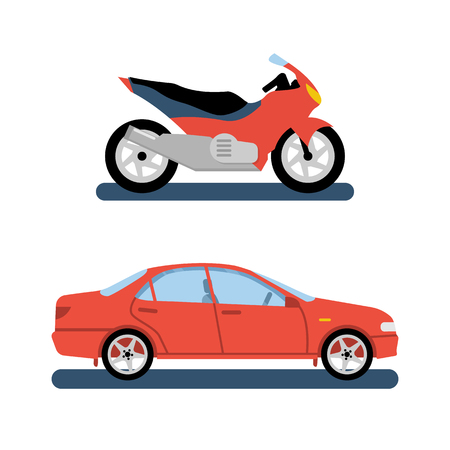Introduction to Car Insurance Claims in India
India’s bustling cities are growing at a rapid pace, with more vehicles hitting the roads every day. As urbanisation intensifies in places like Mumbai, Bengaluru, and Delhi, having car insurance has become not just a legal mandate but a vital layer of protection for vehicle owners. In this dynamic environment, understanding how to claim insurance becomes crucial for every Indian motorist. Traditionally, car insurance claims involved mountains of paperwork and time-consuming processes, but with the country embracing digital solutions and an eco-conscious mindset, these procedures are evolving. The shift towards streamlining claim settlements not only saves time but also helps reduce paper waste—an important step in supporting sustainable living in our cities. This article explores the key differences between cashless and reimbursement car insurance claims in India, empowering urban drivers to make informed decisions while keeping environmental impact in mind.
2. What is a Cashless Car Insurance Claim?
In the hustle and bustle of urban India, where every minute counts and convenience is key, cashless car insurance claims have become increasingly popular among policyholders. A cashless claim means that when your vehicle meets with an accident or requires repairs due to an insured event, you can get it fixed at a network garage—these are workshops and service centres partnered with your insurance company across Indian cities like Mumbai, Bengaluru, Delhi, and Chennai. The insurer directly settles the repair bill with the network garage, so you do not have to pay upfront from your pocket (except for any deductibles or non-covered parts).
How Does the Cashless Claim Process Work?
The process is designed to be seamless and hassle-free. Here’s how it typically unfolds:
| Step | Description |
|---|---|
| 1. Incident Occurs | Your car is damaged in an accident or by another covered peril. |
| 2. Inform Insurer | You notify your insurance provider immediately via helpline or app—most insurers now offer 24×7 support in metros. |
| 3. Visit Network Garage | The insurer provides a list of empanelled network garages (often available on their website or app); you take your vehicle to one of these workshops. |
| 4. Survey & Approval | The insurer sends a surveyor to assess the damage and approves the estimated costs as per policy terms. |
| 5. Repair & Settlement | The garage undertakes repairs; once completed, the insurer settles the bill directly with the garage (excluding deductibles). |
Why Urban Indians Prefer Cashless Claims
With dense traffic, rising pollution, and unpredictable weather conditions in Indian cities, accidents and car damage are common occurrences. The cashless system eliminates financial stress and paperwork, making it especially attractive for city dwellers who value time and transparency. Since only pre-approved network garages are involved, there is enhanced trust regarding service quality and fair pricing—key concerns among urban vehicle owners.
Sustainability Angle: Reduced Paperwork & Digital Trail
The process supports India’s digital push by minimising paperwork through e-claims and digital approvals—a small but significant step towards reducing urban waste and promoting sustainable administrative practices in India’s rapidly growing cities.

3. Understanding Reimbursement Car Insurance Claims
For many Indian vehicle owners, especially those living in semi-urban and rural areas, reimbursement car insurance claims remain the more familiar route due to limited access to network garages. In a reimbursement claim, the policyholder first pays for all repair expenses out of their own pocket after an accident or damage. Once the repairs are completed—often at a trusted local mechanic or garage not part of the insurer’s official network—the owner collects all necessary documents, such as bills, repair estimates, and photographs of the damaged vehicle.
The next step is filing a claim with the insurance company by submitting these documents along with a duly filled claim form. Insurers will then assign a surveyor to verify the damages and assess the validity of the claim. This process can take several days or even weeks, depending on documentation accuracy and accessibility, which can be challenging in smaller towns where digital infrastructure might be lacking. Policyholders must ensure every receipt and paperwork is preserved carefully—a task that can feel daunting amid the daily hustle of Indian city life or in regions where paperwork is often overlooked.
It’s important to note that reimbursement claims require upfront financial commitment from the policyholder. For many families, arranging this immediate cash outflow may strain household budgets. However, this method offers flexibility in choosing any garage, including local workshops trusted for their workmanship and cost-effectiveness. While urban dwellers may find cashless options more accessible, for those in India’s heartlands, reimbursement claims remain crucial despite being time-consuming and sometimes bureaucratic. This scenario highlights how infrastructural gaps influence insurance experiences across India’s diverse urban and rural landscape.
4. Key Differences Between Cashless and Reimbursement Claims
Side-by-Side Comparison: Cashless vs. Reimbursement Car Insurance Claims in India
| Criteria | Cashless Claim | Reimbursement Claim |
|---|---|---|
| Process Flow | Insurer settles the bill directly with the network garage; minimal paperwork for policyholder. | Policyholder pays for repairs upfront, then submits bills to insurer for reimbursement; more paperwork involved. |
| Network Dependency | Available only at insurer’s authorised garages (network garages). | Can be availed at any garage, including local mechanics or preferred workshops. |
| Turnaround Time | Faster process as approvals and payments are streamlined between insurer and garage. | Takes longer due to claim scrutiny, document verification, and reimbursement process. |
| Out-of-Pocket Expenses | Policyholder pays only non-covered items and deductibles; rest is settled by insurer directly. | Policyholder initially bears full cost; gets reimbursed as per policy terms later. |
| Paperwork Required | Minimal – primarily ID proof, RC copy, claim form, and FIR (if needed). | Comprehensive – all bills, payment receipts, repair estimates, claim forms, FIR (if needed), etc. |
| Environmental Impact | Lesser travel if using local network garages; digital documentation reduces paper waste. | Might require multiple visits for paperwork submission and follow-ups; increases carbon footprint due to extra commutes. |
| Cultural & Local Factors | Preferred in urban areas like Mumbai or Bengaluru where network garages are abundant; aligns with India’s move towards Digital Bharat and eco-friendly solutions. | Suits rural or small-town India where trusted local mechanics are valued over network chains; flexibility to choose familiar service providers. |
Understanding the Indian Urban-Eco Context
The cashless system caters well to metropolitan lifestyles—think of bustling Delhi traffic or Chennai’s rapid pace—where time is money and hassle-free processes are prized. It also supports green initiatives by minimising paperwork and unnecessary travel. On the other hand, reimbursement claims reflect the Indian ethos of trust in neighbourhood garages and jugaad (innovation), especially where network options are limited or relationships with local mechanics run deep. The choice often hinges on convenience versus flexibility, speed versus familiarity, and increasingly, how our decisions can lighten the load on the environment while fitting into India’s diverse urban-rural fabric.
5. Pros and Cons in the Indian Urban Context
When it comes to choosing between cashless and reimbursement car insurance claims in India, especially for urban dwellers navigating busy city streets from Mumbai to Bengaluru, understanding the strengths and weaknesses of each option is crucial. Lets evaluate these through the lens of access, convenience, paperwork, and eco-friendly considerations.
Cashless Claims: Urban Advantages
The most significant benefit of cashless claims is the sheer convenience offered in metropolitan areas. With a wide network of partner garages across cities like Delhi and Hyderabad, policyholders can get their cars repaired quickly without upfront payments. This system suits city life where time is precious and traffic congestion often leads to minor accidents. The process also reduces paperwork, aligning with the digital-first mindset of many urban Indians striving to reduce paper waste and adopt green practices.
Eco-Conscious Edge
For those keen on minimizing their carbon footprint, cashless claims minimize the need for multiple trips to insurance offices and garages by streamlining approvals digitally. This not only saves fuel but also helps cut down emissions—a small yet meaningful contribution towards greener cities.
Reimbursement Claims: Flexibility vs. Hassle
On the other hand, reimbursement claims offer flexibility in garage selection, which is beneficial when your preferred mechanic is not part of an insurer’s network—something common in expanding urban landscapes or tier-2 cities rapidly adopting urban lifestyles. However, this method demands considerable paperwork and upfront payments, which can be stressful amidst busy schedules and rising living costs. It may also require several visits to submit documents or clarify queries—adding to road congestion and unnecessary travel.
Weighing Your Urban Choices
For eco-conscious urbanites who value both convenience and sustainability, cashless claims clearly have an edge due to reduced administrative burden and lower environmental impact. Still, those wanting complete control over repair choices might lean towards reimbursement despite its hassles. Ultimately, your decision should reflect your priorities—be it saving time, supporting local workshops, or contributing to a cleaner urban environment.
6. Which Claim Type Suits Indian Cities Best?
India’s urban landscape is as diverse as its culture, and the decision between cashless and reimbursement car insurance claims is deeply influenced by local realities. In metro cities like Mumbai, Bengaluru, and Delhi—where traffic jams are legendary and green mobility solutions are on the rise—cashless claim networks have become an urban lifeline. These cities host a dense network of insurer-approved garages, making cashless claims both convenient and time-saving. Moreover, with increasing eco-consciousness and the push for sustainable transport, quick vehicle turnaround times support initiatives like shared mobility and EV adoption.
Conversely, in tier-2 and tier-3 cities such as Kanpur or Coimbatore, infrastructure might not be as robust. Here, reimbursement claims often suit local drivers who rely on trusted neighborhood mechanics not always affiliated with insurance panels. Cultural preferences play a role: many families value long-standing relationships with local workshops, even if it means handling paperwork themselves. In these settings, the assurance of quality service from familiar hands outweighs the convenience of a cashless process.
For those living in rapidly developing smart cities—like Pune or Hyderabad—the choice may depend on how fast local insurers expand their green garage networks. Environmentally conscious residents may prefer cashless claims at certified “green garages,” which follow eco-friendly repair practices, aligning with city-led sustainability efforts.
Ultimately, choosing the right claim type hinges on three factors: availability of insurer tie-ups (especially for cashless claims), one’s comfort with digital processes versus traditional paperwork, and the desire to support green mobility initiatives in the community. As Indian cities evolve toward smarter, cleaner transport systems, car owners should consider both environmental impact and practical convenience when selecting their claim method.

